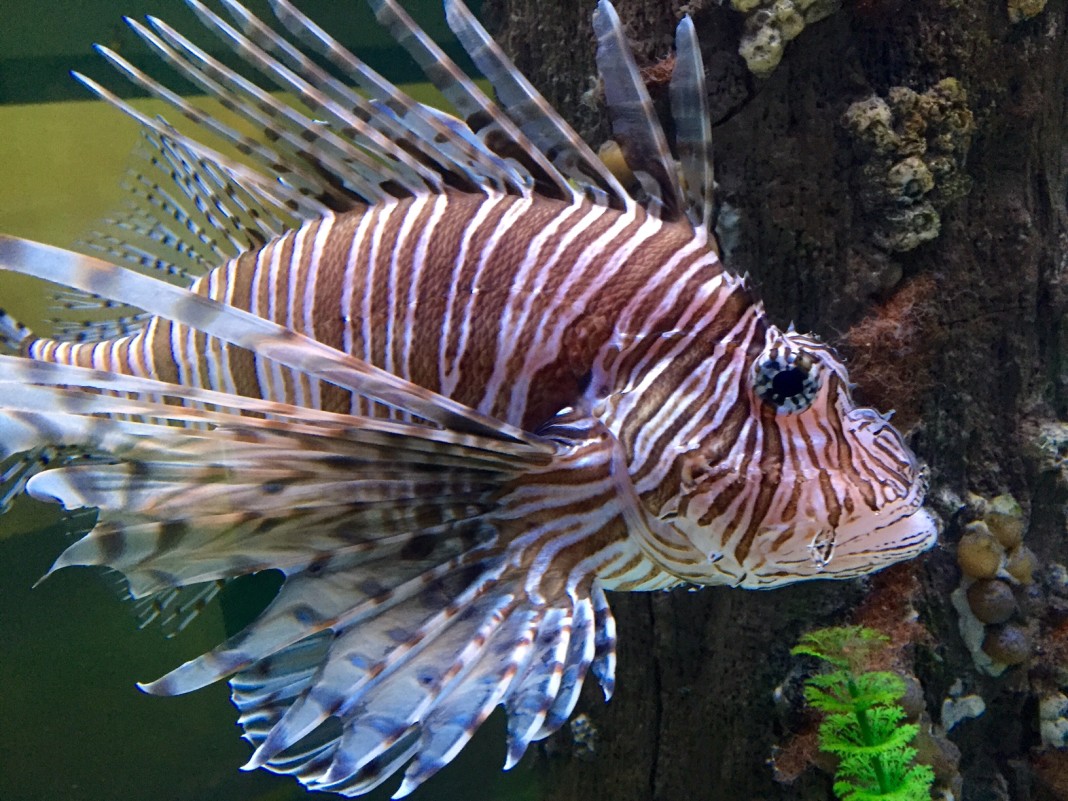The most dangerous creature lurking off the Texas coast doesn’t have massive teeth, isn’t particularly fast and often can also be found fluttering in home aquariums.
In fact, a large one is only about a foot long, but the consequences of the invasive species could have a huge negative impact on a variety of ecosystems.
It’s the lionfish, and it’s the scariest thing imaginable for biologists and fisheries managers, though the threat of the venomous critter has been on the radar for years, its destructive path only increasing in warm-water climates. Much like pythons in the Florida Everglades, these alien invaders have no natural predators in their new environments – except for man – and can’t be held in check by any other means than being captured and killed.
The Harte Research Institute for Gulf of Mexico Studies on the Texas A&M University-Corpus Christi campus and the Reef Environmental Education Foundation are at the forefront of the lionfish fight, with their researchers finding a number of startling insights into lionfish behavior. They include:
- The lionfish’s continued expansion includes the Gulf of Mexico and Texas. A specimen was even caught at the Packery Channel jetties in Corpus Christi last summer. The fish also has been found at the Flower Garden Banks National Marine Sanctuary, the northern most coral reef bank in North America, about 100 miles south of Galveston.
- Lionfish have a huge appetite and have been found to have eaten almost any other marine life they can snag. Those other critters include shrimp, crabs and more than 100 other species, according to stomach content findings. They’ve even been found to eat other lionfish and have been detrimental to a number of prized game fish including snapper, choking out food sources for other species as well.
- While lionfish have been linked to warm habitats, they have shown that they can survive in a range of conditions and depths, and can reproduce quickly, able to breed roughly a year after being born. Predators in their native habitats in the western Pacific Ocean feed on their eggs and parasites there also help control those populations, but in new areas without these control factors, the lionfish has thrived.
While the lionfish infestation has been attributed to pets that were released when they were unwanted – much the way the python has risen to power in Florida – there is one approach fisheries officials have urged to throttle back the lionfish figure: eat them, as many as you can, in fact.
The lionfish’s menacing spines contain venom, but if you know how to handle and avoid them you can extract a delicious bounty of meat. On a recent trip to Belize, lionfish was among the abundance of seafood fare offered, though I wasn’t brave enough to try the cuisine. From what I gathered, the meat is quite tasty and can be used in a variety of dishes, including paired with coconut milk and other spices.
There are even Texas eateries that offer lionfish on the menu.
Other attempts to curb the invasive menace have popped up, including derbies in Florida and other locales that have proven successful in large hauls of speared lionfish destined for the dinner table.
To spread the word of the good eating from such a bad creature, REEF has partnered with federal agencies and seafood companies to tout the lionfish market while also publishing a book of recipes. For more information, including how to safely handle lionfish, visit REEF’s website.
Texas is home to a number of invasive species, though none poses quite the same risk as the lionfish, a creature that has made itself right at home in the Gulf of Mexico and isn’t showing any signs of slowing down.
Hopefully the bark can’t stand up to the bite when it comes to our vital fisheries.
If you see a lionfish, catch one or simply know of someone who did, you should report its location to local state or federal fisheries agencies, who can be reached at the following:
- Texas Parks and Wildlife Department
Call: 361-972-6253 or email Leslie Hartman - US Geological Survey:
Call: 1-877-STOP-ANS or Report online




















Raising awareness regarding the threat posed by the lionfish invasion is important, as is promoting lionfish as a food item. However, for a commercially sustainable solution, the economic return to fishers for harvesting lionfish needs to be increased sufficiently to offset the higher cost of catching them (need to use spears or hand nets) as compared to other seafood species. One approach – use of lionfish spines and tails in jewlery and otyher decorative items. Its already happening in Belize. Information here:
http://raxacollective.wordpress.com/2013/09/14/citizen-science-in-belize-update-if-you-cant-beatem-wearem/
I have my gear ready to go and plan on doing some hunting around the sunken Clipper later this month. Any other opportunities for lionfish hunting off our coast? Closer than Flower Gardens? I’m ready!